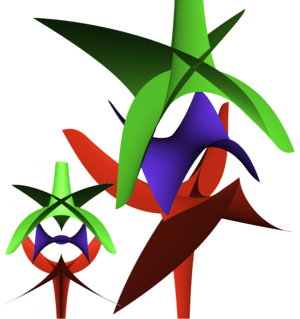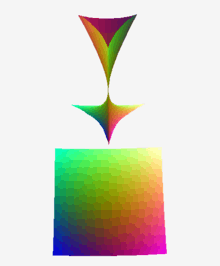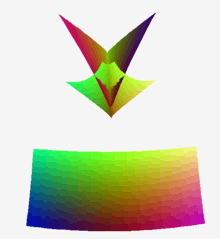Focal surface

For a surface in three dimension the focal surface, surface of centers or evolute is formed by taking the centers of the curvature spheres, which are the tangential spheres whose radii are the reciprocals of one of the principal curvatures at the point of tangency. Equivalently it is the surface formed by the centers of the circles which osculate the curvature lines.


As the principal curvatures are the eigenvalues of the second fundamental form, there are two at each point, and these give rise to two points of the focal surface on each normal direction to the surface. Away from umbilical points, these two points of the focal surface are distinct; at umbilical points the two sheets come together. When the surface has a ridge the focal surface has a cuspidal edge, three such edges pass through an elliptical umbilic and only one through a hyperbolic umbilic.[1] At points where the Gaussian curvature is zero, one sheet of the focal surface will have a point at infinity corresponding to the zero principal curvature.
Special cases
The sphere is the only surface where both sheets of the focal surface degenerate to a single point.
Both sheets of the focal surface of a Dupin cyclide degenerate to curves. These curves form a pair of anticonics, i.e., an ellipse and a hyperbola in perpendicular planes, each passing through the respective foci of the other curve.[2] For the torus, a special Dupin cyclide, the focal ellipse becomes a circle and the focal hyperbola degenerates to the axis of the circle.
One sheet of the focal surface of a channel surface will form a degenerate curve. Such surfaces includes all surfaces of revolution, where the degenerate curve is the axis of revolution.
See also
Notes
- ↑ Porteous, Ian R. (2001), Geometric Differentiation, Cambridge University Press, pp. 198–213, ISBN 0-521-00264-8
- ↑ Chandru, Dutta & Hoffmann 1988
References
- Chandru, V.; Dutta, D.; Hoffmann, C.M. (1988), On the Geometry of Dupin Cyclides, Purdue University e-Pubs.